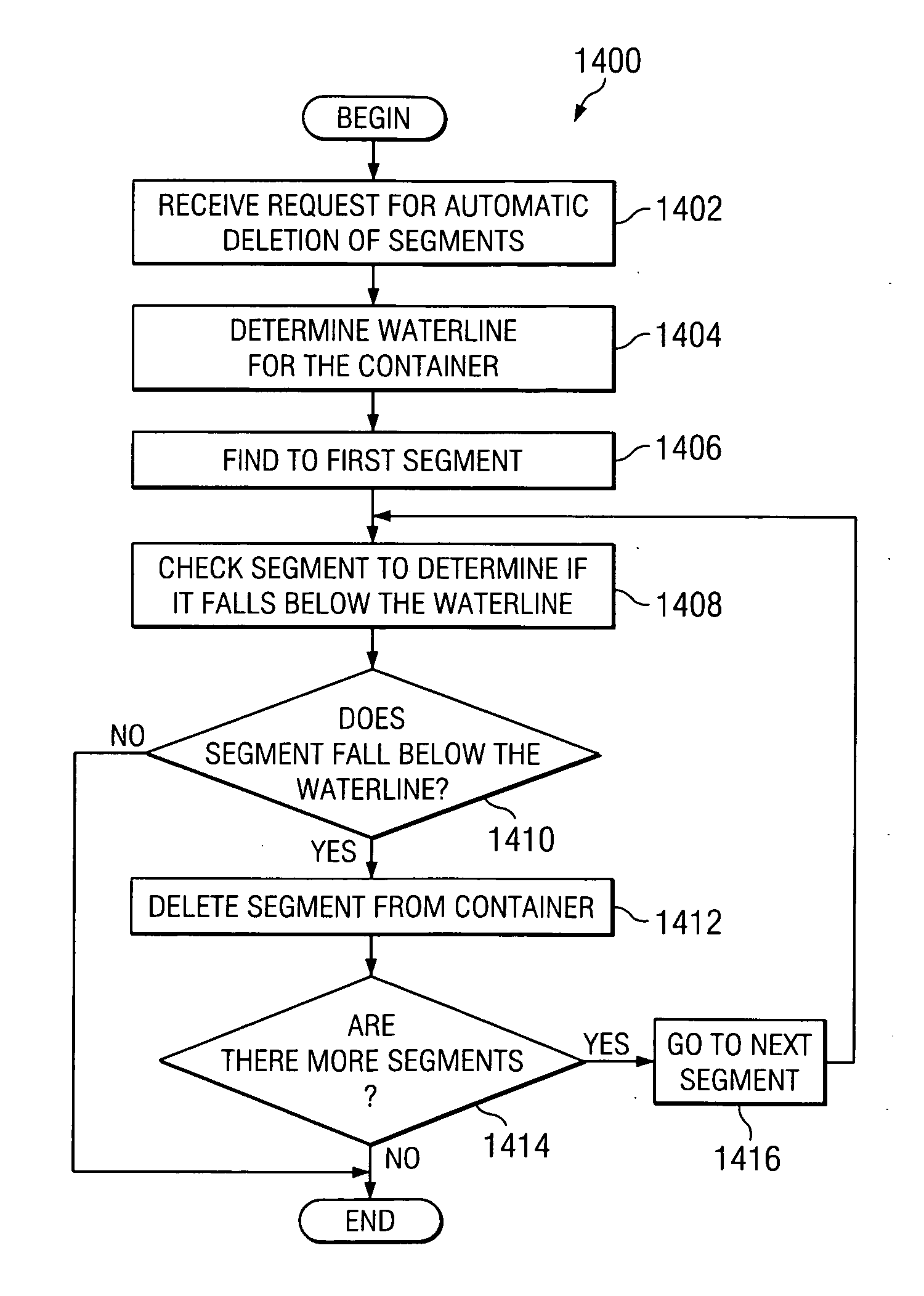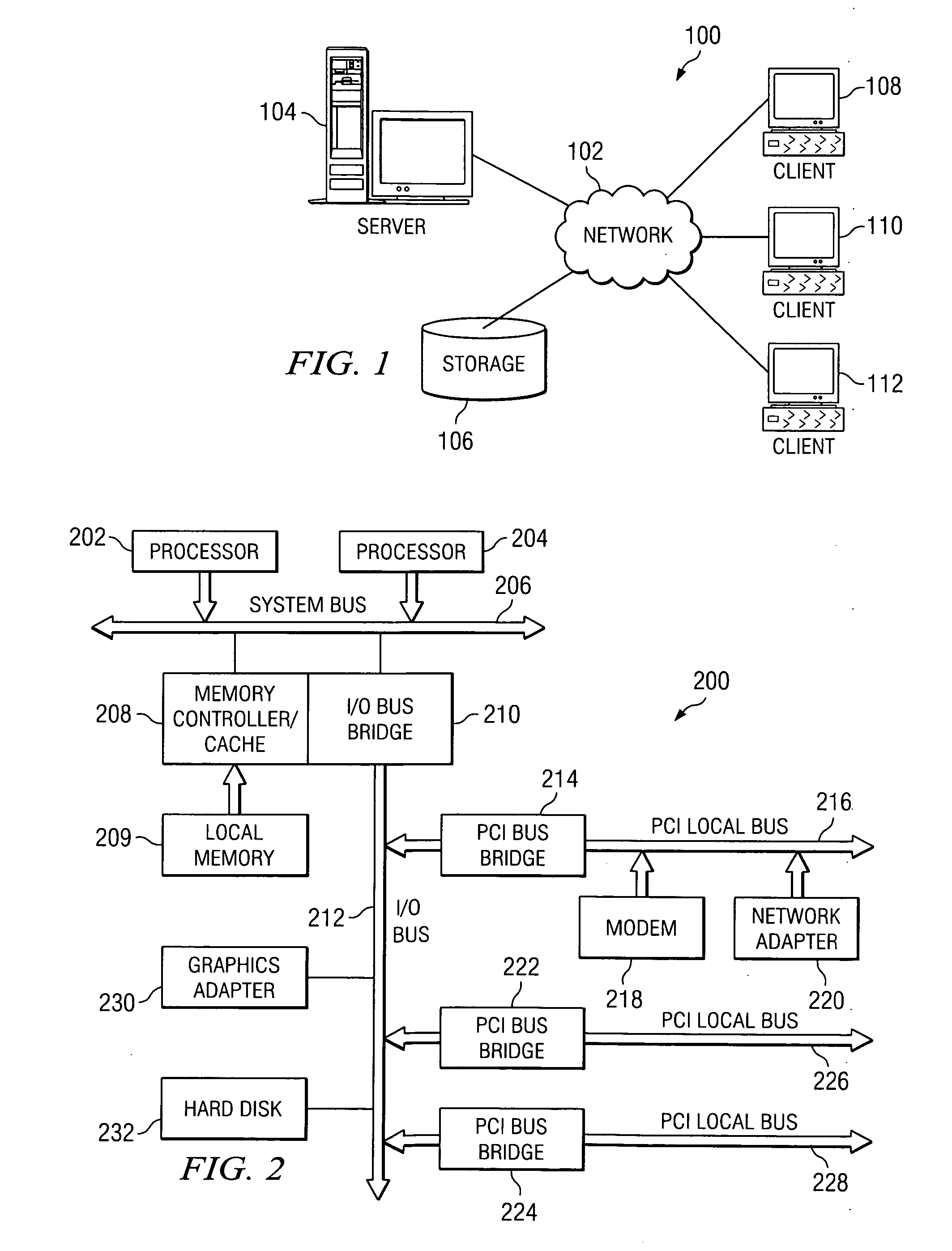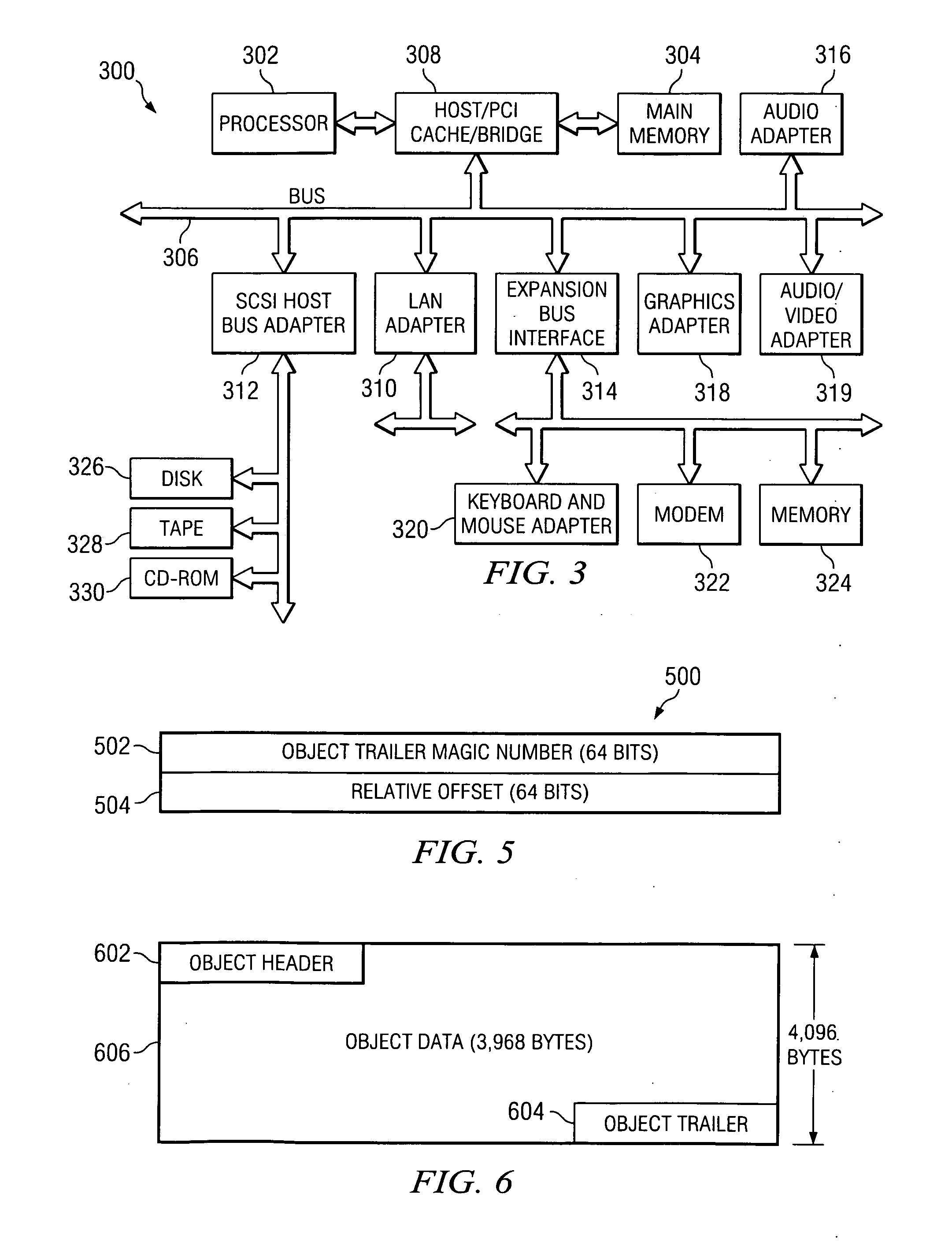Method for bulk deletion through segmented files
a data processing and file technology, applied in the field of data processing systems, can solve the problems of insufficient performance optimization and overhead of such systems, and achieve the effect of minimizing overhead and efficiently deleting data
- Summary
- Abstract
- Description
- Claims
- Application Information
AI Technical Summary
Benefits of technology
Problems solved by technology
Method used
Image
Examples
Embodiment Construction
[0024] The present invention provides for a mechanism for aggregating data in a way that permits data to be deleted efficiently, while minimizing the overhead necessary to support bulk deletion of data. FIGS. 1-3 are provided as exemplary diagrams of data processing environments in which embodiments of the present invention may be implemented. It should be appreciated that FIGS. 1-3 are only exemplary and are not intended to assert or imply any limitation with regard to the environments in which aspects or embodiments of the present invention may be implemented. Many modifications to the depicted environments may be made without departing from the spirit and scope of the present invention.
[0025] With reference now to the figures, FIG. 1 depicts a pictorial representation of a network of data processing systems in which aspects of the present invention may be implemented. Network data processing system 100 is a network of computers in which embodiments of the present invention may b...
PUM
 Login to View More
Login to View More Abstract
Description
Claims
Application Information
 Login to View More
Login to View More - R&D
- Intellectual Property
- Life Sciences
- Materials
- Tech Scout
- Unparalleled Data Quality
- Higher Quality Content
- 60% Fewer Hallucinations
Browse by: Latest US Patents, China's latest patents, Technical Efficacy Thesaurus, Application Domain, Technology Topic, Popular Technical Reports.
© 2025 PatSnap. All rights reserved.Legal|Privacy policy|Modern Slavery Act Transparency Statement|Sitemap|About US| Contact US: help@patsnap.com



